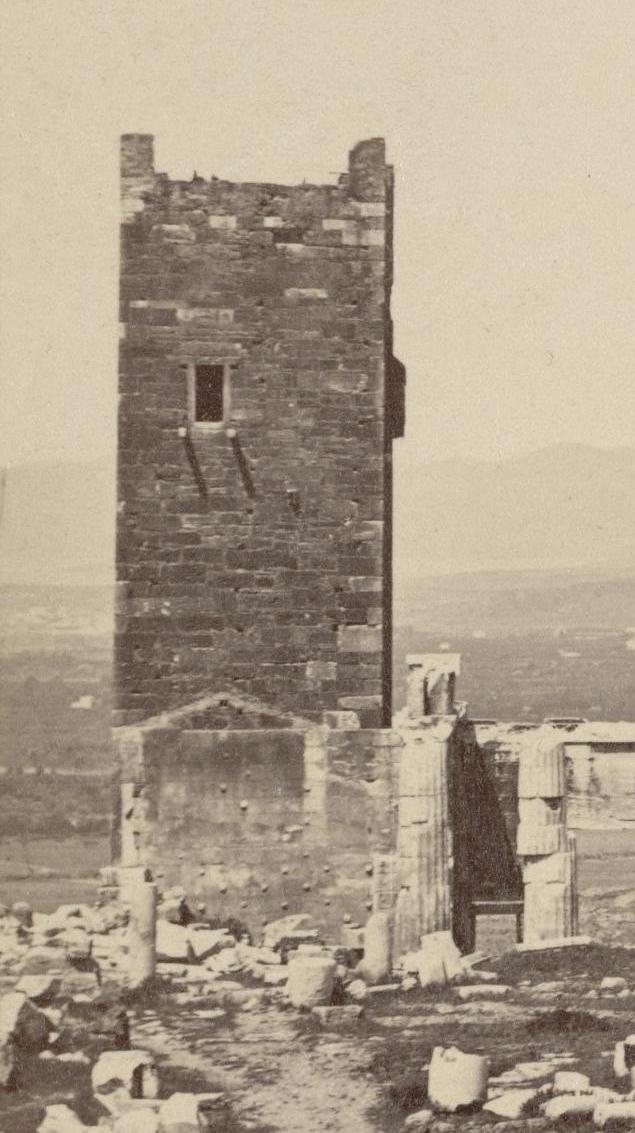The Frankish Tower on the Acropolis of Athens stands as a fascinating chapter in the history of this ancient site. Constructed by the Franks in the aftermath of the Crusades, it served as both a defensive stronghold and a powerful symbol of the Frankish conquest over Athens. Strategically placed on the southern wing of the Propylaea, this medieval tower asserted the presence of Western rulers over the heart of the ancient Greek world.
A Testament to Frankish Rule in Athens
After the Crusades brought European powers into the Eastern Mediterranean, the Franks seized control of Athens and sought to reinforce their authority over the city. The construction of the tower on the Acropolis was no mere architectural addition; it represented Frankish dominance in a city historically associated with Greek civilization. The structure’s imposing height and position offered a commanding view over Athens, reinforcing the foreign rule over this ancient capital.

Under Ottoman Rule: From Defensive Bastion to Prison
With the Ottoman conquest of Athens, the Frankish Tower’s purpose shifted dramatically. The tower was repurposed as a storage facility for salt, an essential and valuable resource at the time, indicating the Ottomans’ pragmatic use of existing structures. However, the tower also became a site of darker purposes, transforming into a prison where captives were held and subjected to torture. This marked the tower’s transformation from a symbol of Frankish authority to a tool of Ottoman power and control, illustrating how each successive regime imposed its own use and meaning onto the structure.

The Demolition of the Frankish Tower: Reclaiming the Classical Legacy
By the 19th century, Greek nationalism and a renewed appreciation for ancient heritage sparked a movement to restore the Acropolis to its classical glory. In 1874, as part of a sweeping effort to remove non-classical elements from the Acropolis, the Frankish Tower was dismantled. This demolition aimed to reconnect the Acropolis with its ancient Greek origins, removing later additions that were viewed as interruptions to the site’s classical beauty. Greek authorities sought to establish the Acropolis as a pure emblem of ancient Greek civilization, representing the pinnacle of Western classical culture.

The Legacy of the Frankish Tower
Though the Frankish Tower no longer stands, its history is an enduring testament to the Acropolis’ complex past. Over the centuries, the Acropolis has reflected the changing powers, cultures, and political aspirations that shaped Athens. The Frankish Tower’s construction, repurposing, and eventual removal highlight the layered identities imposed upon the Acropolis, illustrating how each era left its mark on this historic citadel. Today, while the tower itself may be gone, its memory endures as part of the rich tapestry of the Acropolis, offering a reminder of Athens’ resilience through centuries of transformation and foreign rule.
The history of the Frankish Tower serves as a powerful symbol of the Acropolis’ enduring significance, embodying not only the achievements of ancient Greece but also the subsequent chapters of conquest, adaptation, and revival that have defined one of the world’s most iconic archaeological sites.

